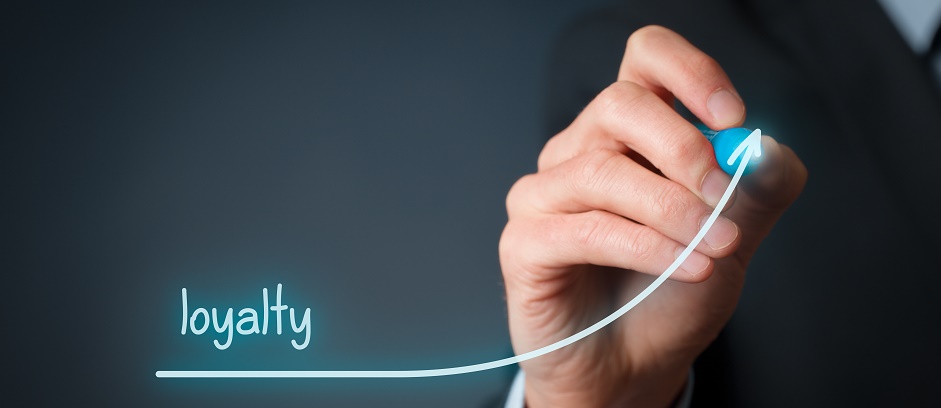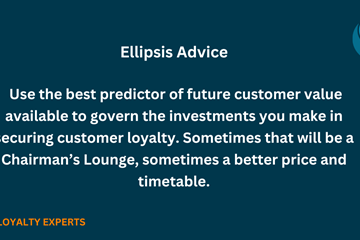Loyalty Alchemy: Turning Points into Gold

I used some of my carefully hoarded credit card loyalty points for family gifts this year, and surprisingly, for a self-styled cynic, I have a dull feeling of discomfort with my now paltry remaining balance. Despite having saved money and receiving something for 'nothing'.
Messrs Skinner and Pavlov would not be surprised that earning and accumulating points has become a reward in its own right, an independent goal. These are the 'secondary reinforcers' of behavioural psychology: the ringing bells that alone excite the subject, because they are so often followed by a treat.. [I do wonder why the work of the behaviourists is not reviewed more often in a relationship marketing context. ..]
Do any of you also have this twinge of loss when you spend your points and your balance makes you look like a mere Bronze member, not the Platinum you rightly are?
Anyway, this started us thinking about loyalty currencies and rewards, and about this arcane alchemy that, when it works, transmutes points into rewards, and ultimately into loyalty and incremental sales.
Points as Currency
At the heart of many loyalty programs is a currency {points, miles...) which is accumulated by the member and exchanged for rewards. These rewards may be any of the available resources in the relationship: money, goods, services, information and status. With scale, these currencies have taken on many of the characteristics of the common currencies in our wallets, with:
- 'Central Bank' operators (e.g. Air Miles-Canada, Nectar-UK, Qantas-Australia)
- Foreign exchange markets (e.g. Points.com)
- Inflation (everyone complains about the escalating cost or dimin ishing worth of rewards)
- Hedging provisions on the Balance Sheets of program operators
So ubiquitous are these currencies that we are often asked "what's next after points?", or whether points have had their day. Indeed, the Managing Director of Waitrose, a UK grocery chain, recently stated: "I don' t think [customers] want a point. I mean, what is a point? I think it's meaningless". Nevertheless, most programs still need a mechanism for value exchange, whether it is points, stars, miles, stamps or magic acorns!
The question is therefore not "what's next?", but rather what's most valuable way to convert whatever stored value you capture, into a proposition which is meaningful for the customer and meets your specific business objectives.
Should points just be disguised cash rebates?
The simplest mechanism to convert stored value into an attractive customer proposition is to offer cash, or at least to make the cash value of points transparent. However, we believe it is not a good idea to follow the 'points = cash' idea too slavishly.Programs do sometimes only offer 'cashback' rewards, and should if a large enough portion of their members are loyal by habit or their engagement is dominated by their 'rational brain', not the desired 'head and heart' relationship that is most robust. But there are at least 4 good reasons why many programs do not make their loyalty currency fully fungible:
- Emotional engagement: Programs that are not straight forward discount engines have a better chance of emotionally engaging their members, because cash is the weakest of all relationship investments a brand can make-it is tangible and impersonal. The strongest relationships are built by the investment of intangible, personal resources. Just ask the frequent flier as she boards ahead of the masses or enjoys club lounge privileges.
- Personalised experiences: If your points are not thinly disguised cash, you control the rewards members can achieve. Having analysed over 50 loyalty programs, we know that there are at least two types of 'redeemers'; members who redeem more frequently and those that doggedly accumulate points for higher value rewards, less frequently. We know that frequent redeemers prefer utilitarian rewards, and that as the effort and time required to earn a reward increases, the more hedonistic the reward needs to be. By offering both practical rewards and guilty pleasures, you can emotionally engage a wider range of members than with cashback alone. Furthermore, cashback rewards are quickly spent and soon forgotten, whilst the first class ticket is appreciated for a long time and gets the deepest engagement and strongest advocacy.
- Changing behaviour: Point reward thresholds work. Members will work harder for a reward the closer they are to reaching it, this is human nature (just search for the "goal gradient hypothesis"). So if you set reward thresholds appropriately, the next reward is always just in reach, encouraging continued participation. Furthermore, if the perceived value of the reward increases with points required, you create an incentive whereby the next reward in reach is a better deal than the reward currently available. It's just not possible to subtly change behaviour in this way with only the rather blunt tool of cash.
- Stored value and loss aversion: The real cost of a point is opaque, but members understand they are their property and valuable, and members with a positive balance will go to some effort to grow their assets and avoid loss. For example, members with an opening balance of 50 points and a reward at 150 points will participate in a program more actively than if they have O points and a reward at 100 points. Same effort, but in the first case there is a vested 'asset' to capitalise and protect.
For example, it is generally effective to vest high value members with gifted points when they spend all of their balance and are a churn risk. Giving an asset to protect often keeps them engaged with the program. Once again, with fungible cash rewards, it's much harder to build these behavioural 'levers' into your program design.
The magic occurs when points are transmuted into rewards, loyalty and sales
So we've seen how non-cash rewards make it much easier to build a meaningful experience that can also subtly provoke the desired customer behaviours. But what about meeting those most fundamental objectives of any program: loyalty and incremental sales?
The magic occurs the moment the member exchanges points for rewards. It is such an important program engagement event that we recommend operators actively manage redemption rates, especially for high-value members. In retail programs, for example, we aim for 90% redemption from members qualifying for a reward each year. Redeemers spend more, shop more frequently, and stay active longer than their peers of the same value. And we have seen significant increases in NPS® for member groups following a redemption.
Expiring points on anniversaries is one way to encourage redemption. Members do not like points expiring, however, so allowing points to roll over so long as at least one reward is taken per period seems to be a good alternative- particularly in high-volume B2B programs. Creating limited-time redemption offers, such as double or triple-value rewards, can also drive redemption activity.
Furthermore, we favour redemptions that are explicit actions by the member, so there Since redemption Isis an unambiguous link between you the operator and the gift received, but we have the critical relationship seen success with surprise gift cards delivered to qualifying members if cash or cash event in loyalty, consider equivalent is the preferred reward.
Finally, since redemption is the critical relationship event in loyalty programs, consider carefully before giving your customers someone else's loyalty currency as compensation for their business. You must balance the value of increased access to their customers with the fact that you will likely be absent at the 'magic' moment of redemption, thereby giving the credit for the reward to the owner of the currency.
So there you have it: loyalty points in some form or another are here to stay, it's what you do with them that counts: how you manage critical 'earn' and 'burn' experiences;the entirety of the customer journey you deliver.
And the philosopher's stone? Using those points to treat different customers differently, what we call Customer Science™. Because that's the only way to convert stored value into a proposition that is individually meaningful for each customer, and which, at the same time, is carefully calibrated to achieve your specific business goals.
We are Ellipsis, the Customer Loyalty Experts. We help businesses thrive through solving complex customer problems. Please get in touch, we’d love to talk.
On a separate note, if you'd like to grow your knowledge on Securitisation in Australia, to find Courses and Events that will help invest your business profits, visit our friends at the ASF.




